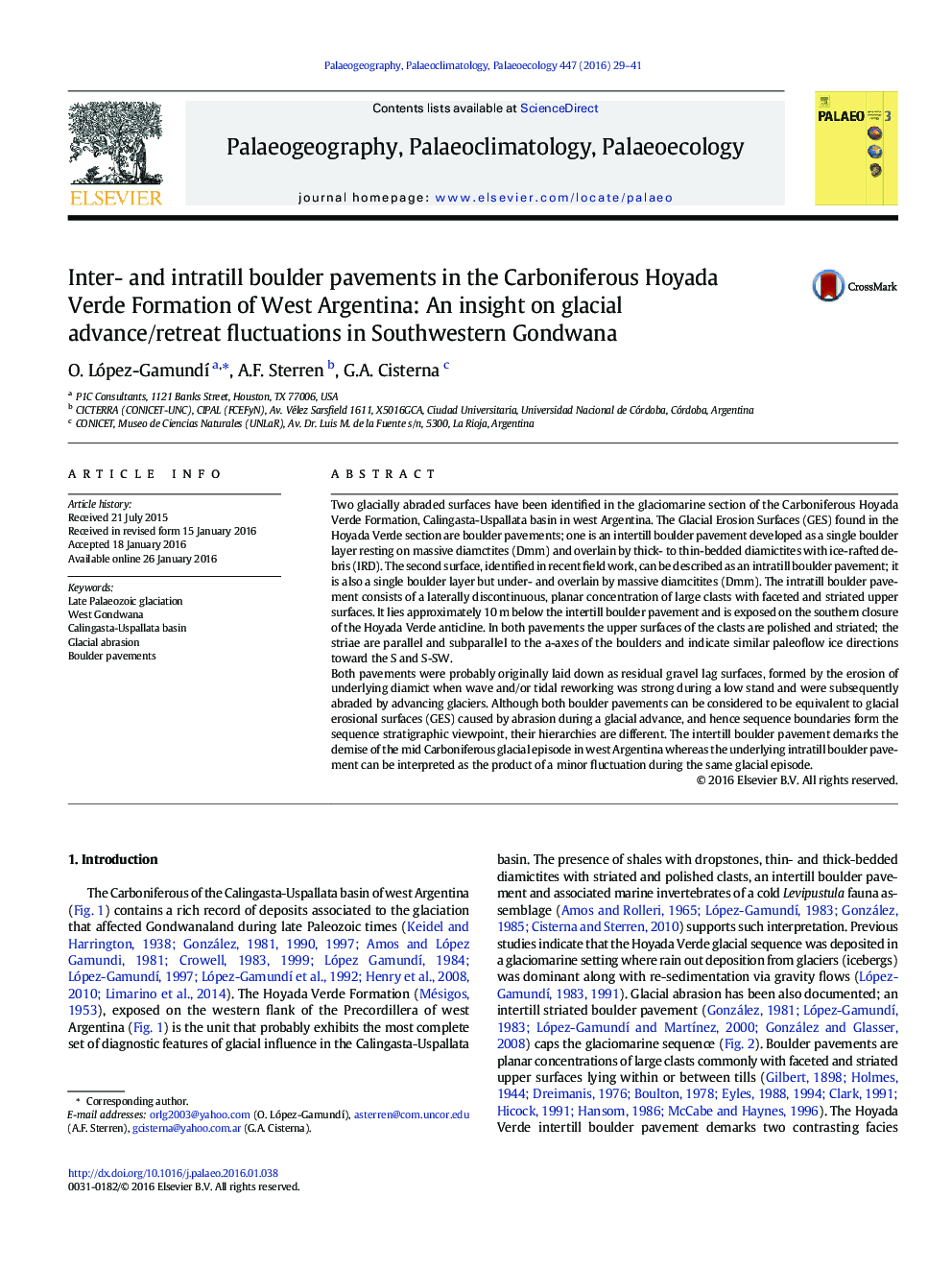| Article ID | Journal | Published Year | Pages | File Type |
|---|---|---|---|---|
| 4465794 | Palaeogeography, Palaeoclimatology, Palaeoecology | 2016 | 13 Pages |
•Two glacially abraded surfaces have been identified in the glaciomarine section of the Carboniferous Hoyada Verde Formation, Calingasta-Uspallata basin in west Argentina.•The uppermost pavement is an intertill, single boulder layer resting on massive diamictites and overlain by thick- and thin-bedded diamictites with ice-rafted debris.•The second surface is a single layer, intratill boulder pavement under- and overlain by massive diamictites.•The intertill boulder pavement demarks the final deglaciation of the basin, whereas the intratill boulder pavement represents a minor fluctuation within the same glacial episode.
Two glacially abraded surfaces have been identified in the glaciomarine section of the Carboniferous Hoyada Verde Formation, Calingasta-Uspallata basin in west Argentina. The Glacial Erosion Surfaces (GES) found in the Hoyada Verde section are boulder pavements; one is an intertill boulder pavement developed as a single boulder layer resting on massive diamctites (Dmm) and overlain by thick- to thin-bedded diamictites with ice-rafted debris (IRD). The second surface, identified in recent field work, can be described as an intratill boulder pavement; it is also a single boulder layer but under- and overlain by massive diamcitites (Dmm). The intratill boulder pavement consists of a laterally discontinuous, planar concentration of large clasts with faceted and striated upper surfaces. It lies approximately 10 m below the intertill boulder pavement and is exposed on the southern closure of the Hoyada Verde anticline. In both pavements the upper surfaces of the clasts are polished and striated; the striae are parallel and subparallel to the a-axes of the boulders and indicate similar paleoflow ice directions toward the S and S-SW.Both pavements were probably originally laid down as residual gravel lag surfaces, formed by the erosion of underlying diamict when wave and/or tidal reworking was strong during a low stand and were subsequently abraded by advancing glaciers. Although both boulder pavements can be considered to be equivalent to glacial erosional surfaces (GES) caused by abrasion during a glacial advance, and hence sequence boundaries form the sequence stratigraphic viewpoint, their hierarchies are different. The intertill boulder pavement demarks the demise of the mid Carboniferous glacial episode in west Argentina whereas the underlying intratill boulder pavement can be interpreted as the product of a minor fluctuation during the same glacial episode.
